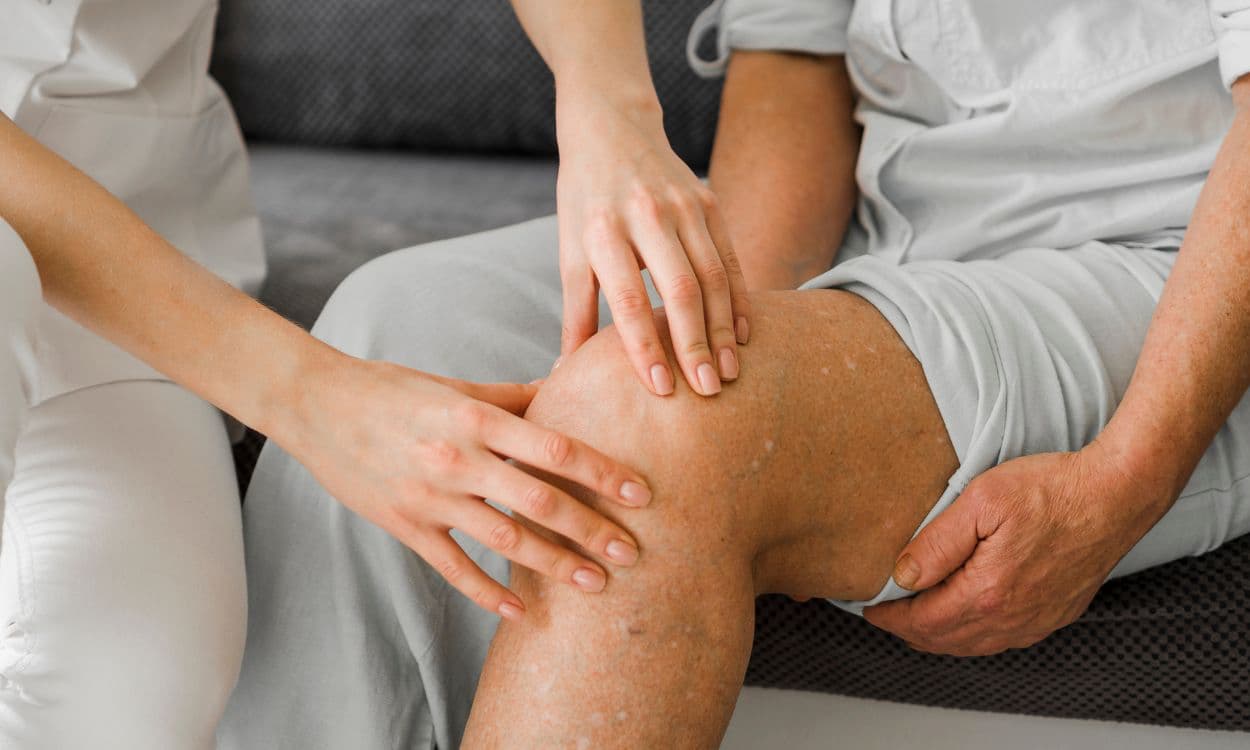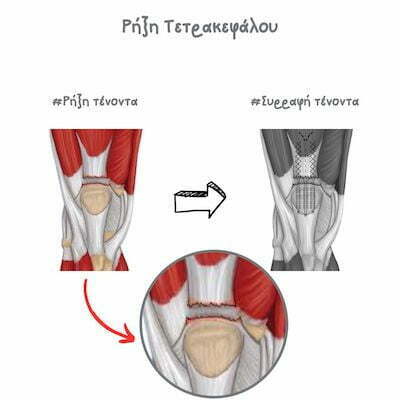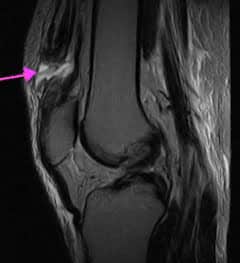Georgios Panagopoulos MD | Orthopaedic Surgeon

Table of contents
What is a quadriceps tendon tear?
The quadriceps tendon connects the femur (thigh bone) to the kneecap (patella). The “quads” is part of the extensor mechanism of the knee and is responsible for straightening the leg. A quadriceps tendon rupture or tear is an injury of the “quads” insertion on the patella leading to a disruption of the knee extensor mechanism.

What causes a quadriceps tendon tear?
Η ρήξη τετρακεφάλου είναι πιο συχνή από την ρήξη του επιγονατιδικού τένοντα, και εμφανίζεται πιο συχνά σε άνδρες > 40 ετών. Μπορεί να αποτελεί μέρος κάποιας αθλητικής κάκωσης, ή να οφείλεται σε μία πτώση πάνω στο λυγισμένο γόνατο, ή στη λάθος προσγείωση μετά από άλμα. Πιο επιρρεπείς είναι ασθενείς με χρόνιες παθήσεις που επηρεάζουν την αγγείωση των τενόντων, όπως ο διαβήτης, η ρευματοειδής αρθρίτιδα, η χρόνια νεφρική ανεπάρκεια.
Predisposing factors may include:
- Chronic renal failure
- Dialysis
- Hyperparathyroidism
- Gout
- Leukemia
- Rheumatoid arthritis
- Lupus
- Diabetes mellitus
- Infection
- Metabolic syndrome
- Steroid use
- Prolonged immobilisation
- Quinolones

What are the symptoms of a quadriceps tendon tear?
Τα συμπτώματα περιλαμβάνουν έντονο πόνο τη στιγμή της ρήξης, τον οποίο ακολουθεί πρήξιμο και δυσχέρεια βάδισης. Χαρακτηριστική είναι η απώλεια μυϊκού τόνου. Συνήθως είναι εμφανές ή ψηλαφάται ένα κενό ακριβώς πάνω από την επιγονατίδα. Ο ασθενής αδυνατεί να ανυψώσει το τεντωμένο γόνατο (SLR +, positive straight leg raise test).
Diagnosis
The doctor will take a thorough history and perform a careful physical exam. An x-ray may show a patella baja, meaning that your kneecap is in a lower position than usual. Ultrasound or MRI are the confirmatory imaging tests of choice.

Surgical Treatment
Most people with a complete tear of the quadriceps tendon require surgery to regain their function. Surgery is done on an outpatient basis, which means that you may go home a few hours after the procedure if you wish. Your surgeon will typically place sutures in your tendon, will pass those sutures through drill holes on the inferior pole of the patella and tie them. Alternatively, your surgeon can use suture anchors instead of tunnels.
Σε περίπτωση μερικής ρήξης, χωρίς απώλεια του εκστατικού τόνου, ή σε εύθραυστους ασθενείς, μπορεί υπό προϋποθέσεις να εφαρμοστεί η συντηρητική θεραπεία.
Recovery
Your knee will be protected for a few weeks with a knee immobilizer, with an intent to fully weight bear after 6 weeks. A rehabilitation plan will be customized for you by your doctor and physical therapist.
FAQs - Frequently Asked Questions
What is a quadriceps tendon tear?
The quadriceps tendon connects the femur (thigh bone) to the kneecap (patella). The “quads” is part of the extensor mechanism of the knee and is responsible for straightening the leg. A quadriceps tendon rupture or tear is an injury of the “quads” insertion on the patella leading to a disruption of the knee extensor mechanism.
What causes the tear?
A quads rupture is more common in patients > 40 years who participate in jumping or running sports. The classic mechanism of rupture involves a heavy load on the slightly bent knee with the foot on the ground. Health conditions that weaken the tendon are also implicated, such as diabetes, rheumatoid arthritis, or chronic kidney failure (especially if on dialysis). Direct trauma is also seen as a cause in younger patients.
How is diagnosis made?
– History & clinical exam -> palpable gap
– X-rays
– Ultrasound
– MRI
What's the treatment?
Surgery is usually surgical.
Find us
Book an appointment with us today
